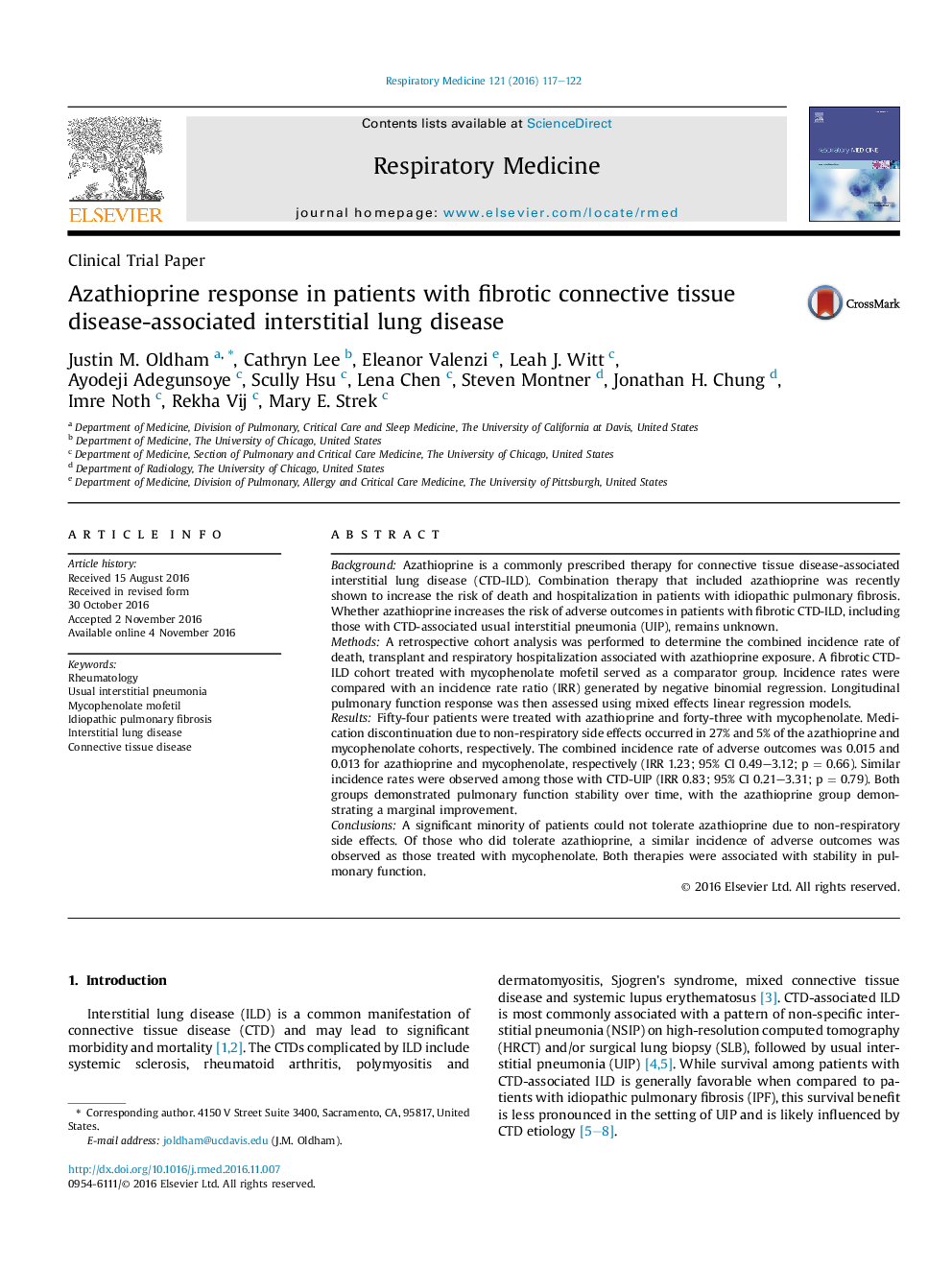| Article ID | Journal | Published Year | Pages | File Type |
|---|---|---|---|---|
| 5725035 | Respiratory Medicine | 2016 | 6 Pages |
â¢A large minority of patient did not tolerate azathioprine due to side effects.â¢Adverse outcomes were similar between azathioprine and mycophenolate cohorts.â¢Azathioprine was not associated with worse outcomes in those with CTD-UIP.â¢Pulmonary function stability was observed in both treatment groups.
BackgroundAzathioprine is a commonly prescribed therapy for connective tissue disease-associated interstitial lung disease (CTD-ILD). Combination therapy that included azathioprine was recently shown to increase the risk of death and hospitalization in patients with idiopathic pulmonary fibrosis. Whether azathioprine increases the risk of adverse outcomes in patients with fibrotic CTD-ILD, including those with CTD-associated usual interstitial pneumonia (UIP), remains unknown.MethodsA retrospective cohort analysis was performed to determine the combined incidence rate of death, transplant and respiratory hospitalization associated with azathioprine exposure. A fibrotic CTD-ILD cohort treated with mycophenolate mofetil served as a comparator group. Incidence rates were compared with an incidence rate ratio (IRR) generated by negative binomial regression. Longitudinal pulmonary function response was then assessed using mixed effects linear regression models.ResultsFifty-four patients were treated with azathioprine and forty-three with mycophenolate. Medication discontinuation due to non-respiratory side effects occurred in 27% and 5% of the azathioprine and mycophenolate cohorts, respectively. The combined incidence rate of adverse outcomes was 0.015 and 0.013 for azathioprine and mycophenolate, respectively (IRR 1.23; 95% CI 0.49-3.12; p = 0.66). Similar incidence rates were observed among those with CTD-UIP (IRR 0.83; 95% CI 0.21-3.31; p = 0.79). Both groups demonstrated pulmonary function stability over time, with the azathioprine group demonstrating a marginal improvement.ConclusionsA significant minority of patients could not tolerate azathioprine due to non-respiratory side effects. Of those who did tolerate azathioprine, a similar incidence of adverse outcomes was observed as those treated with mycophenolate. Both therapies were associated with stability in pulmonary function.
